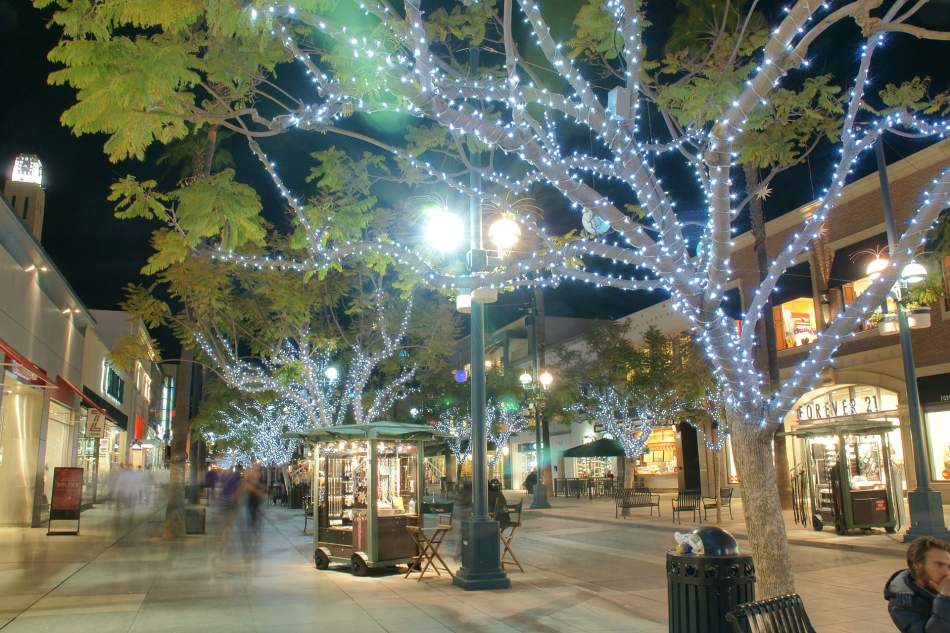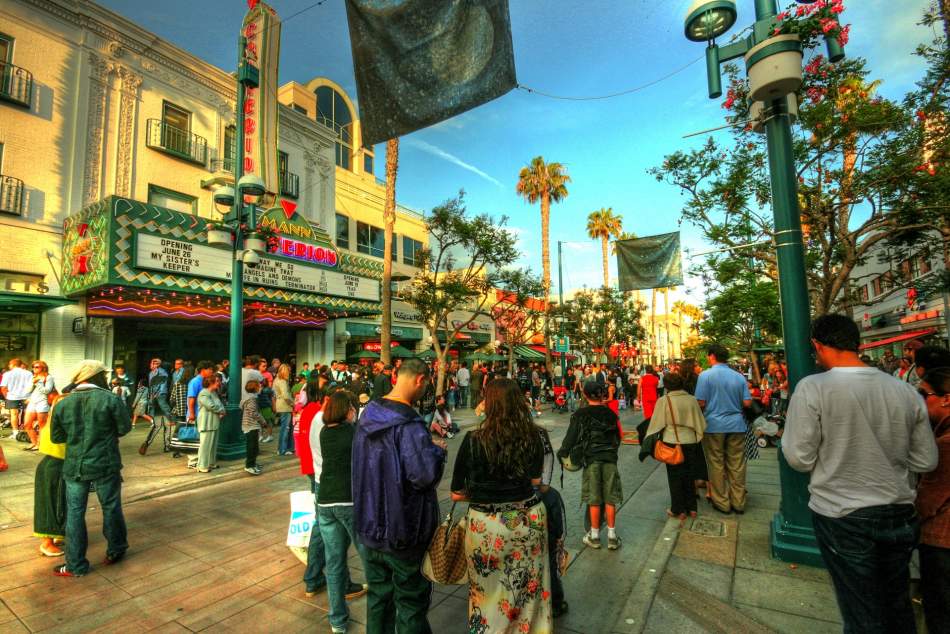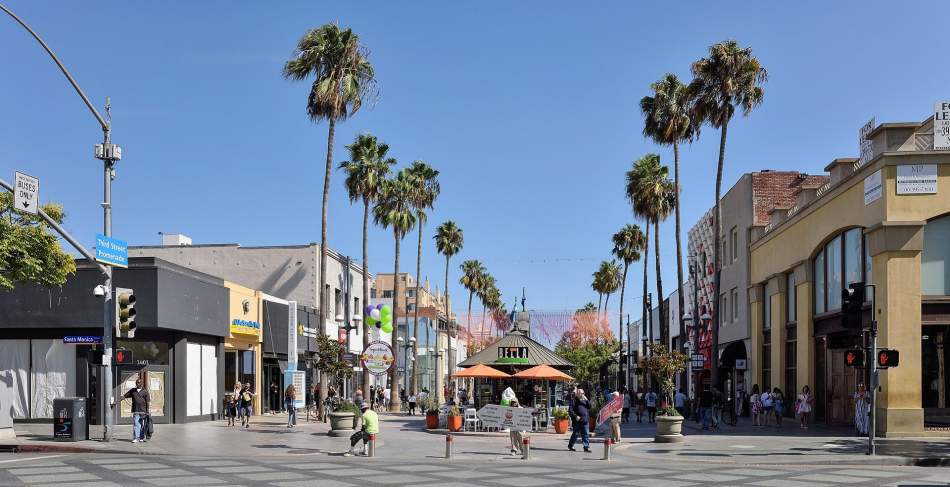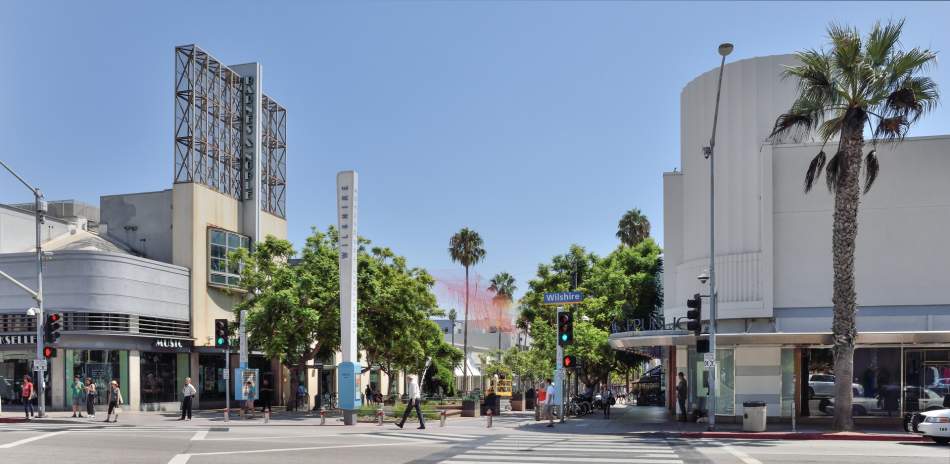Since the 1980s, Santa Monica's Third Street Promenade has been one of the waterfront city's most important economic drivers and tourist attractions. Each day, throngs of pedestrians crowd into the three-block stretch between Wilshire Boulevard and Broadway, which is closed to vehicular traffic. Now, citing increased competition from other outdoor malls across Southern California, the City of Santa Monica is taking steps to revamp of one of its most iconic destinations.
Yesterday, a presentation given to the Santa Monica Planning Commission detailed a draft of the Promenade 3.0 report - which explores the current state of the pedestrian mall and what steps should be taken to ensure its future viability.
The project team - led by the design firms Rios Clementi Hale Studios and Gehl with engineering firm KPFF - evaluated the existing infrastructure of the Promenade, including its street furniture, landscaping, paving, utilities, artwork, and signage. Amongst many observations and recommendations, the report notes a lack of permanent seating in some parts of the mall, inconsistency in paving materials, and the possible need to replace sewage and drainage systems.
The report also explores how Third Street Promenade is used. According to the project team, approximately three-quarters of visitors to Third Street Promenade are Los Angeles-area locals - with a more diverse array of ethnic groups and age groups than the population as a whole. A slight majority of visitors arrive on foot, bike, or public transit, a rarity for shopping centers in Southern California. Foot traffic at Third Street Promenade peaks at 3 pm on both weekdays and weekends, signaling opportunities to expand its offerings during other times of the day.
This information informed a series of near-term and long-term recommendations for Third Street Promenade.
In the short term, the report suggests:
- parklets and similar installations to provide informal seating and gathering spaces;
- new shade and water features;
- movable furniture;
- games such as ping pong and foosball tables;
- public art installations;
- seasonal pavilions;
- light art festivals; and
- food and drink festivals.
Long-term improvements could include:
- shared outdoor dining areas;
- performances spaces such as stages; play elements, swings, and hammocks;
- interactive water features; fireplaces;
- permanent seating and gathering spaces;
- fitness spaces;
- outdoor demonstration kitchens;
- public gardens; tree replacement;
- new planters; shade structures;
- towers, elevated walkways, or vantage points;
- interactive lighting;
- retail kiosks and pop-up restaurants;
- new paving materials;
- green infrastructure such as bioswales;
- pedestrian safety improvements like retractable bollards; and
- activation of alleys off of the promenade.
Besides infrastructure, the Promenade 3.0 effort will also explore new possibilities for programming, as well as policies on permitting and licensing, and retail tenanting strategies.
Moving forward, the project's design team will draft three alternatives for the Promenade, which will be reviewed at public forums. That process should be included in either May or June, after which point beta testing could begin at the Promenade's 1200 block.
A final plan is expected to be considered by Fall 2019.
- Santa Monica (Urbanize LA)â










